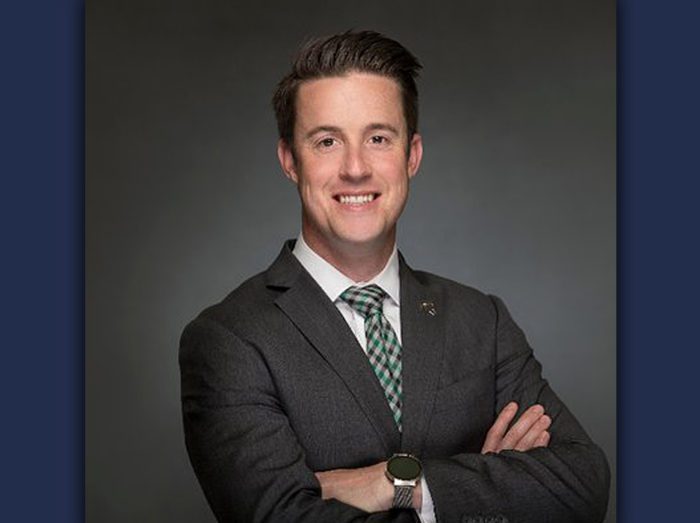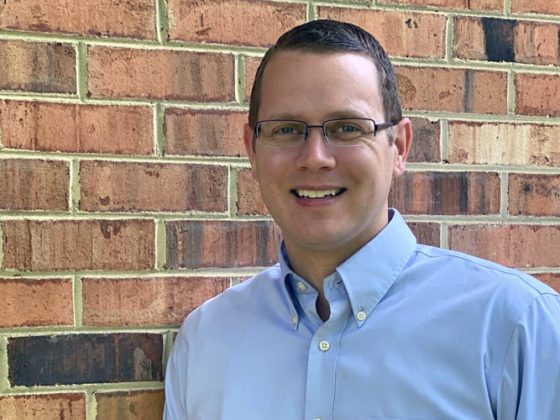Ryan Weigand was recently promoted to Senior Director of Development at the Virginia Athletics Foundation, where he found himself with the responsibility of managing staff for the first time. His pursuit for a leadership development program led him to Darden Executive Education & Lifelong Learning’s Leading Teams for Growth and Change program. Weigand shares how the program has given him the confidence to lead his team, and how investing in professional development is paying dividends for him and the organization.
Tell us about your career journey and your current role.
I’ve been working in intercollegiate athletics since I graduated from UVA in 2008. I aspire to be an athletic director one day. Since moving back to Charlottesville, I’ve been working for the Virginia Athletics Foundation. My current role is Senior Director of Development. It’s a new leadership role for me and I thought it’d be smart to take a leadership development program since it’s my first time managing staff.
What career goals prompted you to take Leading Teams for Growth and Change?
With my career aspirations of becoming an athletic director comes the responsibility of managing a team. The size of that team depends on the size of the institution, but it can range anywhere from managing 75 people to managing over 300 people. Now that I’m starting to manage a team in my existing role, I spoke to my boss about pursuing a leadership development program and was directed to take Leading Teams for Growth and Change at Darden. Now that I completed the program, I’m so grateful to my organization for investing in me because it was the best experience that I’ve had in a professional development program.
What are some new skills or perspectives you gained?
I’ve always known that you have to build relationships with people before you can ask them to do things for you. However, the program essentially solidified that point. Also, if you don’t take it a step further and get to know your team as human beings and show that you care about their well-being, then they’re not going to work as hard. To use a rowing analogy that I learned from the program, you’re not going to be able to row the boat in the same direction without having a strong relationship.
One of the books in the program that we read was Switch: How to Change Things When Change Is Hard by Chip and Dan Heath. I thought the book was exceptional. They talk about how there is a subconscious and a conscious person controlling every person, and how to speak to each person. Understanding this concept and how to apply it is a skillset that I will always take with me in any role.
How did the classroom and rowing experiences work together to enhance your learning?
I thought they complimented each other really well. I am an athlete and grew up in athletics, so I enjoyed the rowing experience. You could tell that Lynn [Professor Lynn Isabella] and Dan [Olympian Dan Lyons] had clearly worked together for a long time. Dan and the other coaches were in the class with us all day and Lynn was on the water with us. They would interject in the classroom or on the water with the team concepts we were learning. They would ask us what we thought, interacting with students in the class. They added a tremendous amount of value and real world experiences for us to draw from. I often use sports analogies, so to be able to take some of the application from the classroom and our case studies, and then apply it to the water – it resonated with me.
How did you interact with the faculty and coaches throughout the week?
Lynn was great! She made the most of her time with us. She was gracious in every interaction, whether it was during a break or in the classroom. She’s a professional at getting to know people individually and building relationships, and she showed that in her interactions with us.
I also have to give a shout out to the program manager, Rhiana. She kept us on track and was one of the best communicators that I’ve ever been around. She laid out everything for us, planned everything to the nth degree and it made the program a first-class operation.
How have you applied your new insights in your new role?
There were personality assessments that we went through called Discovery Insights. It was the best personality assessment that I’ve ever taken. After the program, I had my team go through Discovery Insights as well, which was very valuable.
Virginia Athletics Foundation also has a big staff retreat. When I was helping with the planning of it, I reached out to Lynn for advice on a few elements and she was extremely helpful and responded quickly with some insight. It shows that my organization investing in me was not only valuable for my growth, but the organization’s growth as well.
What would you say to someone who’s considering executive education, but feels like they can’t make the time for it?
I have an incredible wife and two little boys, and I was able to make the time for it. If your organization is willing to invest in you, make the time because if you don’t, it’s an opportunity squandered and you’re not going to be able to become that best version of yourself. Another way to think about it is if you’re not willing to invest in yourself then will your organization be wiling to invest in you?
Do you have a favorite memory or story from your program experience?
The class is divided into teams, which I thought was good because it encourages you to get to know other people in the program. Over the course of the week, I valued hanging out with my team and sharing stories. My team built a strong bond, and I’ve stayed in contact with some of my team members after the program.
Another fond memory I have was with Lynn toward the end of the class. I told her how my administration is going to ask me what I learned and I need to have an idea of what to say – that ‘wow’ moment and the change we’re going to make. I told her that I was sweating bullets a little bit about it because I wanted to really sell how this investment in myself was a win-win for the organization. I remember she looked at me and said, “You’ve got to be a bright spot. Light attracts light. Be the bright spot in the organization and others will be attracted to the light. Eventually, leadership is going to take notice.” What she said has stuck with me. On those days where I think no one is listening or our team is feeling a bit frustrated, I’ve reminded myself to stay positive and be the bright light.
Learn more about Leading Teams for Growth and Change and how it may help you reach your career or organizational goals.




